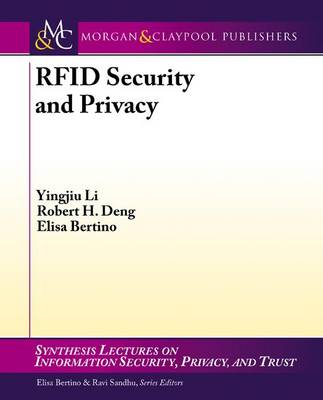Synthesis Lectures on Information Security, Privacy, and Tru
2 total works
As a fast-evolving new area, RFID security and privacy has quickly grown from a hungry infant to an energetic teenager during recent years. Much of the exciting development in this area is summarized in this book with rigorous analyses and insightful comments. In particular, a systematic overview on RFID security and privacy is provided at both the physical and network level. At the physical level, RFID security means that RFID devices should be identified with assurance in the presence of attacks, while RFID privacy requires that RFID devices should be identified without disclosure of any valuable information about the devices. At the network level, RFID security means that RFID information should be shared with authorized parties only, while RFID privacy further requires that RFID information should be shared without disclosure of valuable RFID information to any honest-but-curious server which coordinates information sharing. Not only does this book summarize the past, but it also provides new research results, especially at the network level. Several future directions are envisioned to be promising for advancing the research in this area.
Private Information Retrieval
by Xun Yi, Russell Paulet, and Elisa Bertino
Published 1 September 2013
This book deals with Private Information Retrieval (PIR), a technique allowing a user to retrieve an element from a server in possession of a database without revealing to the server which element is retrieved. PIR has been widely applied to protect the privacy of the user in querying a service provider on the Internet. For example, by PIR, one can query a location-based service provider about the nearest car park without revealing his location to the server.
The first PIR approach was introduced by Chor, Goldreich, Kushilevitz and Sudan in 1995 in a multi-server setting, where the user retrieves information from multiple database servers, each of which has a copy of the same database. To ensure user privacy in the multi-server setting, the servers must be trusted not to collude. In 1997, Kushilevitz and Ostrovsky constructed the first single-database PIR. Since then, many efficient PIR solutions have been discovered.
Beginning with a thorough survey of single-database PIR techniques, this text focuses on the latest technologies and applications in the field of PIR. The main categories are illustrated with recently proposed PIR-based solutions by the authors.
Because of the latest treatment of the topic, this text will be highly beneficial to researchers and industry professionals in information security and privacy.
The first PIR approach was introduced by Chor, Goldreich, Kushilevitz and Sudan in 1995 in a multi-server setting, where the user retrieves information from multiple database servers, each of which has a copy of the same database. To ensure user privacy in the multi-server setting, the servers must be trusted not to collude. In 1997, Kushilevitz and Ostrovsky constructed the first single-database PIR. Since then, many efficient PIR solutions have been discovered.
Beginning with a thorough survey of single-database PIR techniques, this text focuses on the latest technologies and applications in the field of PIR. The main categories are illustrated with recently proposed PIR-based solutions by the authors.
Because of the latest treatment of the topic, this text will be highly beneficial to researchers and industry professionals in information security and privacy.

